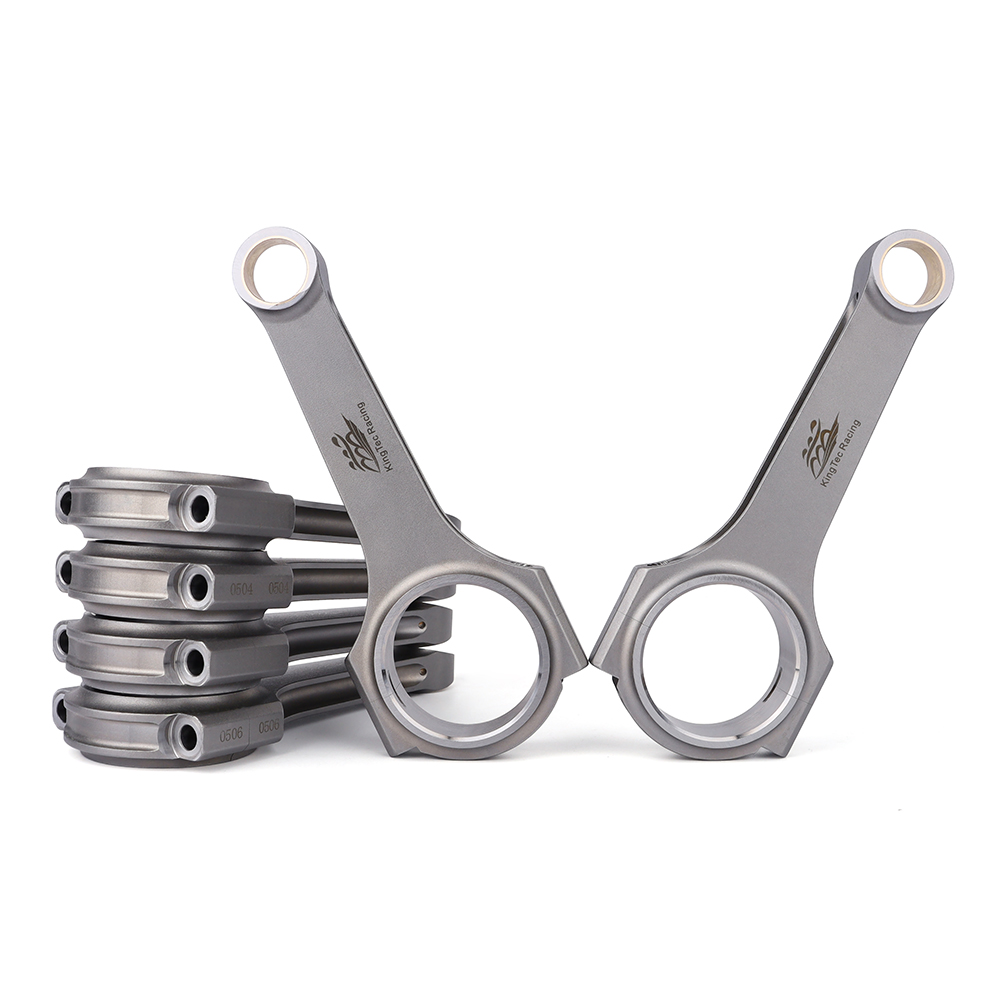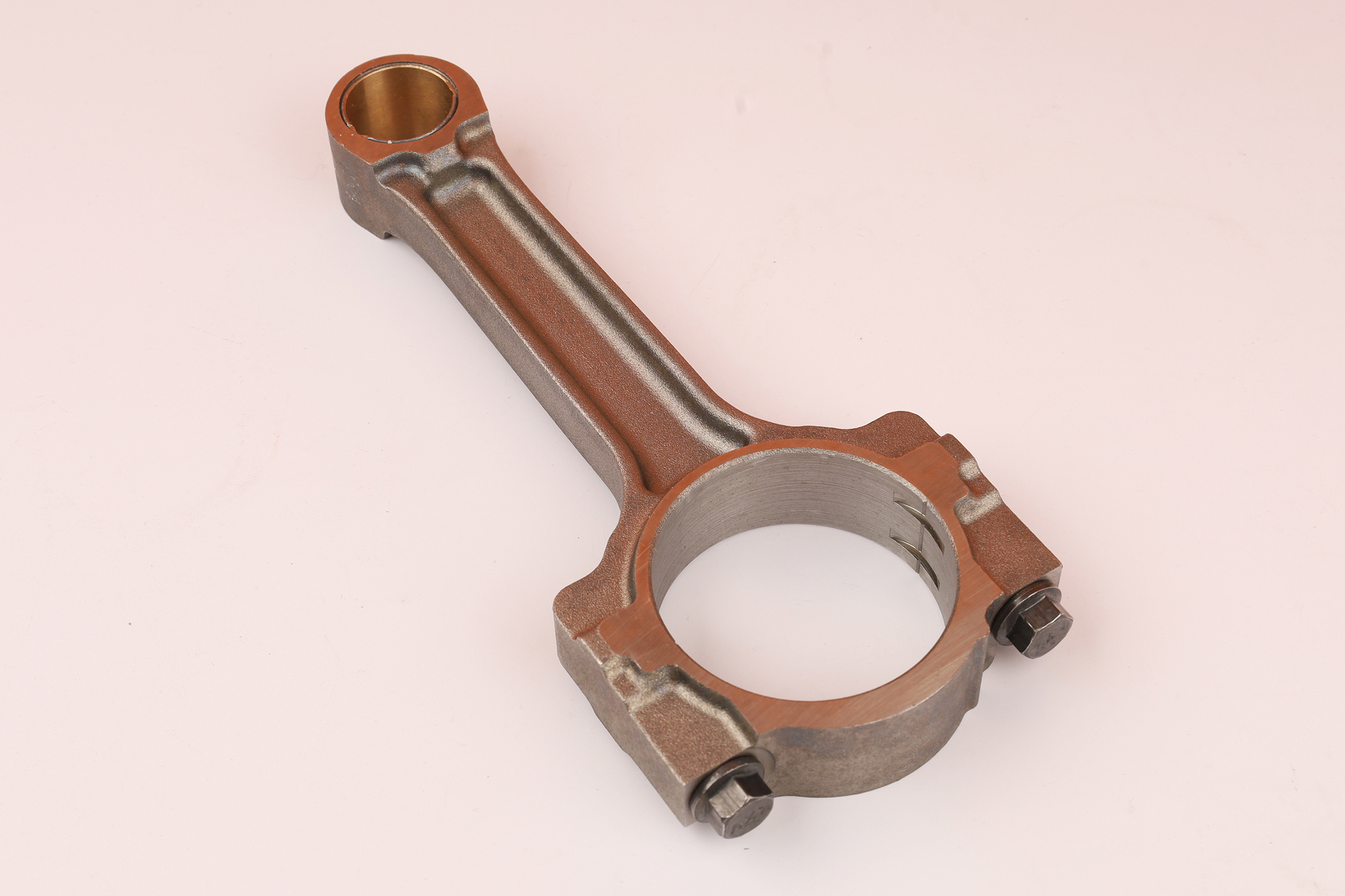Forged vs Cast Connecting Rods
By KingTec Racing
May 5th, 2023
Connecting rods are an essential component of the auto tuning engine systems, and they play a vital role in transmitting power from the piston to the crankshaft. In the world of high-performance racing parts, choosing the right connecting rods can significantly impact the performance and reliability of an engine. There are two primary methods used to manufacture connecting rods: forging and casting.What are forged connecting rods?Forged connecting rods are typically made from forged steel alloys. The process of forging involves heating the metal to a high temperature and then shaping it under extreme pressure using a forging press. This process aligns the grain structure of the metal, which results in a more uniform and dense structure. The uniform grain structure provides greater strength and durability, making forged connecting rods more resistant to fatigue and less likely to fail under high loads and high RPMs.The forging process can also produce connecting rods with more precise dimensions and tolerances, which improves their fit and function within the engine. Forged connecting rods can also be designed with thinner walls and smaller cross-sections than cast connecting rods, which reduces their weight and allows for a more efficient and responsive engine.

How Forged Connecting Rods are Made?
1. Material Selection: High-quality steel or aluminum alloy billets are chosen for their strength and heat resistance.2. Heating and Shaping: The billets are heated to a precise temperature to make them malleable, then shaped under high pressure using forging dies or hammers.3. Heat Treatment: The forged rods undergo heat treatment processes such as quenching and tempering to further enhance their strength and toughness.4. Machining: The forged rods are machined to achieve precise dimensions and surface finishes.
The Benefits of Forged Connecting Rods
Strength and Durability: Forged connecting rods have superior strength and durability compared to cast rods, making them ideal for high-performance applications.Uniform Grain Structure: The forging process creates a uniform grain structure, minimizing the risk of internal defects and improving overall reliability.Customization: Forged rods can be tailored to specific requirements, allowing for customization of dimensions, weights, and other features to optimize engine performance.What are cast connecting rods?Cast connecting rods are typically made from cast iron or steel alloys. The process of casting involves pouring molten metal into a mold and allowing it to cool and solidify. This process does not produce as uniform a grain structure as forging, and the resulting connecting rods are generally less dense and less strong than forged connecting rods.Cast connecting rods may also have surface imperfections that can lead to increased friction and wear. To compensate for this, they may require additional machining and finishing to improve their surface quality and reduce the risk of failure.

How Cast Connecting Rods are Made?
1. Pattern Creation: A pattern of the connecting rod is made using materials like wood, plastic, or metal.2. Mold Preparation: The pattern is placed in a mold cavity made of sand or other materials.3. Casting: Molten metal is poured into the mold cavity and allowed to cool and solidify, taking the shape of the pattern.4. Finishing: The cast rod is removed from the mold, cleaned, and machined to achieve final dimensions and surface finishes.
Benefits of Cast Connecting Rods
Cost-Effectiveness: Cast connecting rods are often more affordable to manufacture than forged rods, making them a budget-friendly option for racing enthusiasts.Complex Geometries: Casting allows for the production of complex shapes and features that may be difficult or costly to achieve through forging.Mass Production: Casting is well-suited for mass production, enabling faster lead times and higher production volumes.
In summary, forged connecting rods are stronger, more durable, and more precise than cast connecting rods due to their manufacturing process. They are typically used in high-performance engines that are subject to heavy loads and high RPMs. Cast connecting rods are less expensive to produce and may be suitable for lower-performance engines with less demanding requirements. The choice between forged and cast connecting rods ultimately depends on the specific needs of the engine and the intended application.
Previous
Can Forged Crankshafts Enhance Your Racing Car's Performance?
Read More
Next
A Basic Guide to Forged Crankshaft
Read More


